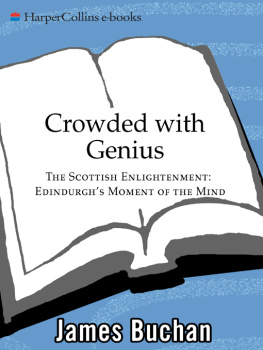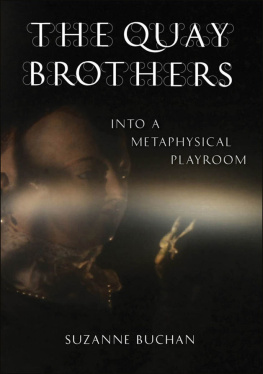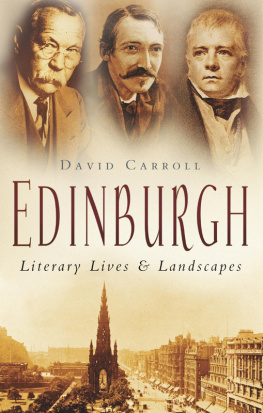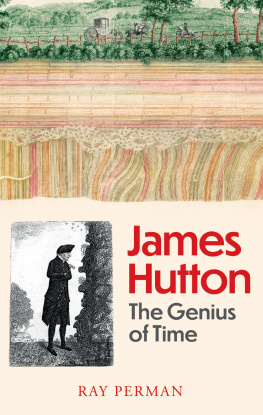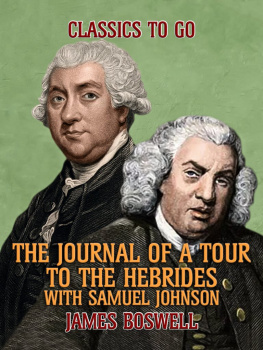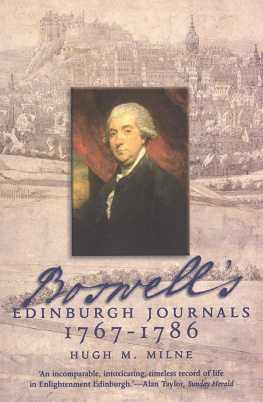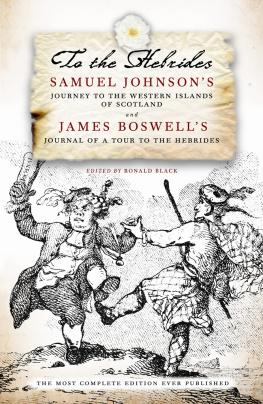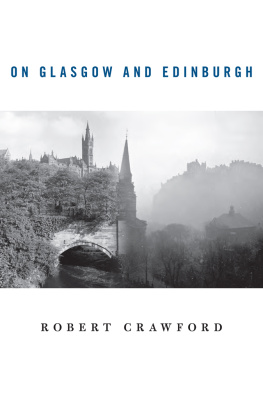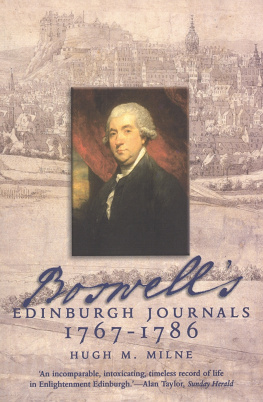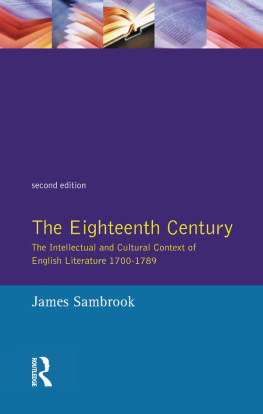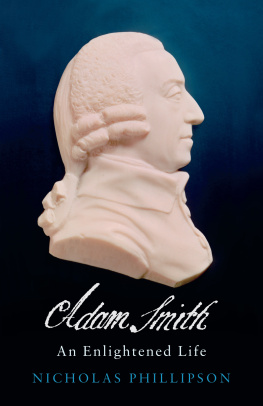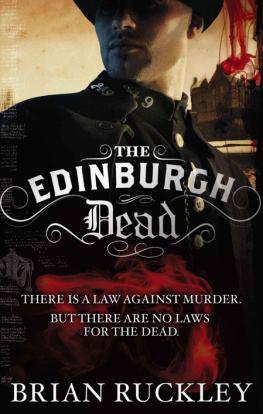1. John Campbell of the bank, 1749 (William Mosman)
2. Edinburgh, after 1794 (Francis Nicholson)
3. Prince Charles Edward Stuart, 1748 (Maurice-Quentin de La Tour
4. David Hume, 1754 (Allan Ramsay)
5. The High Street before the Removal of the Luckenbooths, 1793 (David Allan)
6. James Hutton, c . 1790 (Sir Henry Raeburn)
7. North-west View of Edinburgh Castle from the Water of Leith, 1792 (Joseph Farington)
8. Henry Mackenzie, c . 1810 (Sir Henry Raeburn)
9. Robert Burns, 1787 (Alexander Nasmyth)
10. Sir John and Lady Clerk of Penicuik, 1792 (Sir Henry Raeburn)
11. Duncan Forbes of Culloden, c . 1737 (attr. Jeremiah Davison)
12. East View of Edinburgh Castle, c . 1746 (Paul Sandby)
13. Provost George Drummond, 1764 (Sir George Chalmers)
14. Perspective View of the Royal Infirmary from the North, c . 1753 (Paul Sandby)
15. James Craig, c . 1770s (David Allan)
16. Plan of the New Streets and Squares Intended for the City of Edinburgh, 1767 (James Craig)
17. North-west View of the Castle, Old Town and Bridge of Edinburgh, 1781 (Philip Mercier)
18. The Journalist, with a view of Auchinleck or The Land of Stones, c . 1785 (Thomas Rowlandson)
19. The Hill of Arthur Seat, and Town of Edinburgh, from the South-west, 1774 (John Clerk of Eldin)
20. The General Assembly of the Kirk of Scotland, 1783 (David Allan)
21. Mrs Agnes McLehose, 1788 (John Miers)
The authors and publishers would like to thank the following for permission to reproduce illustrations: Plate 1, Royal Bank of Scotland, Edinburgh; 2, Bridgeman Art Library, London/Agnew & Sons, London; 3, 6, 11, 13 and 21, Scottish National Portrait Gallery; 4, Private Scottish Collection; 5, 7, 12, 16, 17 and 20, Edinburgh City Libraries; 8, National Portrait Gallery, London; 9 and 15, Bridgeman Art Library, London/ Scottish National Portrait Gallery; 10, The National Gallery of Ireland; 18, Hulton Archive; 19, British Library. Maps reproduced courtesy of Edinburgh City Libraries.
The author would like to thank the staffs of the British Library, the National Library of Scotland, the National Archives of Scotland, Edinburgh University Library, the Town Council Archives and the Edinburgh Room of the Central Public Library, Edinburgh. He is grateful for the assistance of Caroline Dawnay, David MacMillan, Caroline Knox, John Murray, Deborah Stewartby, Allan Massie, Constantine Normanby, Liz Robinson, Matthew Rice, Caroline Westmore and, last but foremost, James and Anna Buxton.

Every age hath its consolations, as well as its sufferings .
Adam Ferguson
For a period of nearly half a century, from about the time of the Highland rebellion of 1745 until the French Revolution of 1789, the small city of Edinburgh ruled the Western intellect. For near fifty years, a city that had for centuries been a byword for poverty, religious bigotry, violence and squalor laid the mental foundations for the modern world.
The battle of Culloden Moor in 1746, which the writer John Buchan called the last fight of the Middle Ages, was also the beginning of the modern age for Scotlands ancient capital. The town, which had sat little changed on its rock until then, inconvenient, dirty, old-fashioned, alcoholic, quarrelsome and poor, began to alter, first slowly, then in a convulsion. Lochs were drained, ravines spanned by bridges, streets and squares thrown out into the stony fields. Ale gave way to tea and port and whisky. People dined at one oclock, then two, then three, and then four.
Men discovered there were ways of charming women this side
David Hume, Adam Smith, William Robertson, Adam Ferguson and Hugh Blair were the first intellectual celebrities of the modern world, as famous for their mental boldness as for their bizarre habits and spotless moral characters. They taught Europe and America how to think and talk about the new mental areas opening to the eighteenth-century view: consciousness, the purposes of civil government, the forces that shape and distinguish society, the composition of physical matter, time and space, right actions, what binds and what divides the two sexes. They could view with a dry eye a world where God was dead or had withdrawn into Himself, where hierarchy had disintegrated and luxury was super-abundant.
The American patriot Benjamin Franklin, who first visited Edinburgh with his son in 1759, remembered his stay as the densest happiness he had ever experienced.
As for Edinburgh, it was intoxicated with its own brilliance. In the history of every polished nation, a correspondent wrote to The Scots Magazine in July 1763, there is always one period at least to be found, which is crouded with men of genius in every art and science. This was the case of Greece after the overthrow of Xerxes, of Rome during the reign of Augustus, of France in the time of Lewis XIV, and of England in the time of Q. AnneFor my part, I pour out my heart with the utmost gratitude to Providence for giving me a being in this illustrious period; and I have great reason to congratulate the present generation of my countrymen for enjoying the same blessing.
How did this come about? How did Scotland, bullied or ignored by its neighbours for centuries, find and keep its place in the sun? How did a city that consisted of a single long street and fewer than forty thousand inhabitants come for a season to rival Paris? What was this sudden burst of geniussprung up in this country by a sort of enchantment, soon after the Rebellion of 1745?
Nothing in history is sudden or enchanted. Edinburghs moment had its origins in the Scottish past and still reverberates in the present. It was a belated reaction to a series of injuries to Scotlands sense of itself in politics, in religion, in morality. A mental crisis was surmounted in a physical city of stone, ordure, taverns, turnpike stairs, towering apartment blocks, dancing assemblies, icy churches and torrents of wind. From its resolution came not simply modern Scotland but modernity itself.
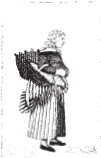
Edinburgh in the warm September of 1745 was a handsome, cramped and discontented provincial town of approximately 40,000 people,
There were nine Presbyterian churches, each with two ministers, and two more outside the walls; though a private chaise could do the journey faster. It was not until the time of Robert Burnss visit in 1787 that the journey was cut to sixty hours.
The parliamentary Union with England in 1707 and the abolition of the Scottish Privy Council a year later had demolished the formal administration of Scotland. In as much as the country was ruled at all during the long ascendancy in London of Sir Robert Walpole, it was controlled by the Duke of Argyll and a clutch of law officers. The Edinburgh Town Council, whose constitution had been violently disputed but altered very little since the time of James VI, was a permanent oligarchy that nominated its own successor from candidates submitted by restrictive merchant and craft guilds and even elected the towns MP. Advocates and clergymen, being unincorporated, had no say in either election.

